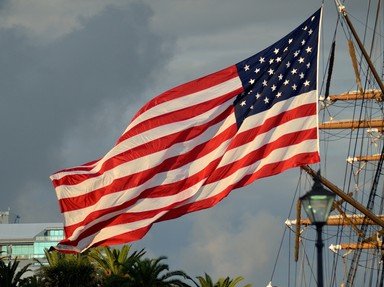Quiz Answer Key and Fun Facts
1. Let's begin by understanding just what a bayou is and where its name most likely derived from. Bayou means which of the following and is based on what language?
2. Now for a look at the people of the bayou. While not all of the denizens of the bayou are necessarily of the same ethnic origin, of course, Cajuns are generally associated with the term "bayou".
From what area were they deported, eventually finding themselves in the Gulf Coast region of the U.S.?
3. What type of music is generally understood to be popular among Creole/Cajun peoples, which features such instruments as rub-boards, accordions, electric guitars and drums?
4. One of the most populous cities in the United States was founded near Buffalo Bayou. What city is this, that is protected from flooding by the bayou itself?
5. The small fishing village of Bayou Le Batre is located in which southern U.S. state?
6. What languages comprise the tongue that most refer to as "Cajun"?
7. A popular American television program that began airing in 2010 on The History Channel was entitled simply "Swamp People". What was the primary goal of the program?
8. Bayou Courtableau lies in St. Landry parish in Louisiana. This bayou feeds the Bayou Teche, one of the first areas settled by Acadian (Cajun) immigrants upon their arrival in the area. The area where the two bayous converge was originally an Indian trading post. By what name is the modern town known?
9. One of the first early settlements of the Acadians when they arrived in Louisiana was a place called Pierre Part. Lying fairly near to the capital, Baton Rouge, what parish do folks in it and the surrounding communities call home?
10. Which of these bayous is the longest one in the world, extending from near Pine Bluff, Arkansas down to Sterlington, Louisiana?
Source: Author
logcrawler
This quiz was reviewed by FunTrivia editor
Pagiedamon before going online.
Any errors found in FunTrivia content are routinely corrected through our feedback system.

